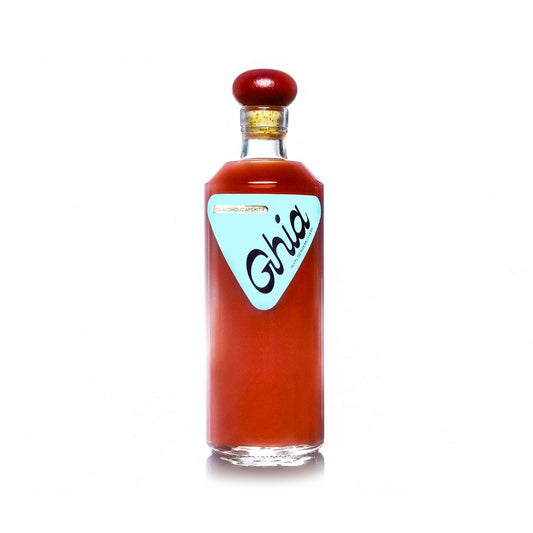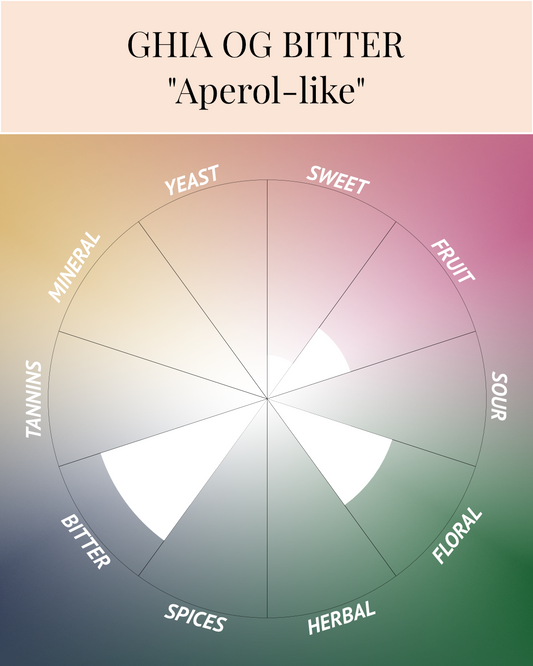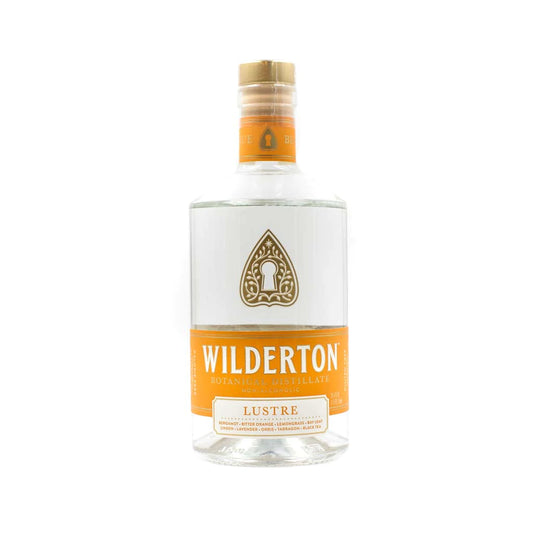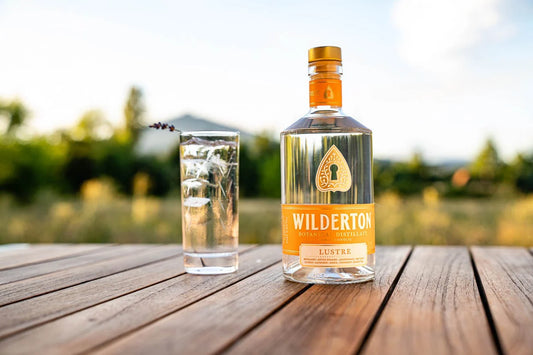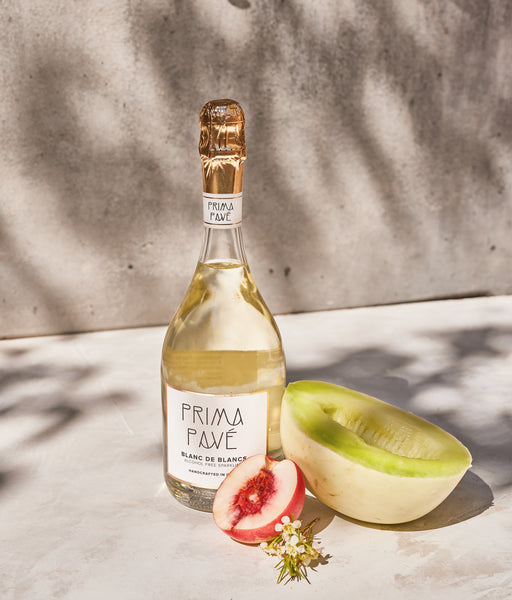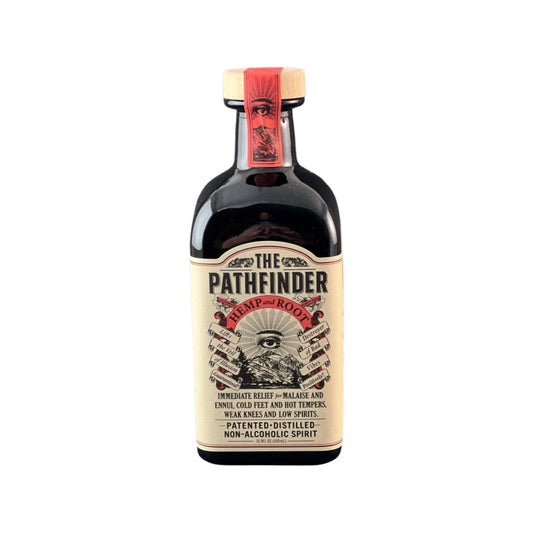Ever found yourself craving the vibrant flavors of vermouth but not in the mood for the alcohol buzz? We've been there too! It can be a real challenge to find that perfect non-alcoholic alternative that captures the essence of vermouth without compromising on taste. But fear not, because we've got your back! In this blog post, we're diving headfirst into the world of non-alcoholic vermouth alternatives that will satisfy your cravings and level up your mixology game. Get ready to join us on a flavor-filled journey where we unlock the secrets to finding that perfect non-alcoholic substitute for traditional vermouth.
But first, let’s delve into how vermouth even became a thing and why you should even try to find a substitute!
A Brief history of vermouth
Vermouth's story begins in the late 18th century when it emerged as a medicinal elixir in Italy and France. Its origins can be traced back to the renowned herbal apothecaries of those times. The early recipes were carefully crafted by infusing wine with a botanical blend, often featuring wormwood as a key ingredient. Over time, vermouth transcended its medicinal roots and became a sought-after libation.
Vermouth's journey from a medicinal elixir to a symbol of elegance is a testament to its captivating flavors and refined appeal. As the concoction of botanicals and wine melded together, vermouth's complexity of taste quickly garnered attention beyond its medicinal origins. The unique blend of aromatic herbs, spices, and botanicals created a sensory experience that couldn't be ignored.
In the late 18th century, vermouth found its way into the glasses of discerning palates who appreciated the artistry behind its creation. Its balanced combination of flavors and the interplay of sweet and bitter notes captivated the senses, elevating it from a mere medicinal remedy to a sophisticated libation.
Vermouth's rise in popularity was fueled by its versatility in consumption. It became an integral component in the emerging world of mixology, making its way into classic cocktails that have endured the test of time. From the iconic Martini to the timeless Manhattan, vermouth brought its distinct character, adding depth and complexity to these beloved concoctions. The cocktail culture embraced vermouth's allure, celebrating its ability to transform ordinary spirits into extraordinary libations.
Beyond the realm of mixology, vermouth found its place as a cherished ingredient in culinary creations. Its intricate flavors enriched sauces, marinades, and reductions, enhancing the taste profiles of dishes with a touch of sophistication. Whether drizzled over seafood or incorporated into gourmet recipes, vermouth lent an air of elegance and refinement to the culinary arts.
As vermouth continued to captivate the palates of connoisseurs, its reputation grew, becoming synonymous with a sense of sophistication and discerning taste. The elegant bottle designs and the ritual of serving vermouth in delicate glassware further contributed to its perception as a symbol of refined indulgence.
Today, vermouth remains an iconic presence in the world of mixology and gastronomy, cherished for its multifaceted flavors and the touch of elegance it brings to any occasion.
Traditional ingredients and production process
Crafting vermouth is an art that demands expertise and attention to detail. The traditional approach involves infusing a base wine—usually white or red—with a carefully curated selection of botanicals. These may include aromatic herbs, flowers, spices, roots, and citrus peels, each contributing its own unique character to the final product. The wine is then fortified with a neutral spirit, elevating its alcohol content and lending a touch of fortitude to its flavor profile. The mixture is aged to perfection, allowing the marriage of flavors and the development of the signature complexity that defines vermouth.
So what does vermouth taste like?
Vermouth tantalizes the taste buds with its captivating range of flavors. The profile can vary depending on whether it's a sweet or dry vermouth. Sweet vermouth entices with its velvety richness, boasting notes of caramel, dried fruit, and warm spices. On the other hand, dry vermouth offers a lighter and crisper experience, featuring herbal, floral, and subtly bitter undertones that dance on the palate. The intricate balance of flavors in vermouth makes it a delightful standalone aperitif and a harmonious companion in cocktails and culinary creations.
Vermouth's versatility is truly remarkable. In the world of mixology, it plays a pivotal role in classic cocktails, lending its unique depth and character. From the iconic Martini and Manhattan to the beloved Negroni, vermouth brings its signature touch to these timeless libations. But vermouth's influence extends far beyond the classics. Modern mixologists have been experimenting with innovative twists, incorporating vermouth into spritzes, sours, and even crafting enticing mocktails that cater to a wide range of tastes.
Not limited to the bar, vermouth also shines in the culinary realm. Its complex flavors add a new dimension to sauces and reductions, elevating dishes with their depth and sophistication. Whether it's a velvety vermouth cream sauce or a delicate pan sauce infused with the herbaceous notes of vermouth, the possibilities are endless. Additionally, vermouth works wonders as a marinade or braise, imparting its essence into chicken, fish, or vegetables and creating dishes that are both vibrant and comforting.
With its fascinating history, diverse flavor profile, and boundless culinary potential, vermouth invites you to embark on a delightful exploration. Join us as we delve deeper into vermouth alternatives, cocktail recipes, and cooking inspirations that will unlock the full potential of this remarkable libation.
So do you have to use Vermouth?
When it comes to non-alcoholic vermouth alternatives, the good news is that there's a growing array of options that can still deliver those beloved vermouth flavors. Whether you're looking for a non-alcoholic aperitif that captures the essence of vermouth or seeking creative replacements using other spirits, we've got you covered. Let's dive into some fantastic non-alcoholic vermouth alternatives:
Category 1: Non-Alcoholic Aperitifs & Vermouths
- Roots Divino Bianco: This non-alcoholic vermouth alternative boasts a delightful blend of botanicals, including wormwood, sage, and chamomile. With its herbal undertones and a touch of bitterness, Roots Divino Bianco brings that classic vermouth character to your glass without the alcohol.
- Roots Divino Rosso: For those seeking a non-alcoholic vermouth with a reddish hue, Roots Divino Rosso is a perfect choice. Crafted with a mix of botanicals like gentian, coriander, and citrus peel, it delivers a harmonious balance of flavors reminiscent of traditional red vermouth.
- Lyres Aperitif Dry: This Australian-made non-alcoholic aperitif captures the essence of vermouth with its vibrant blend of citrus, native Australian spices, and other botanicals. With its crisp and refreshing profile, Lyres Aperitif Dry is a fantastic alternative for vermouth-based cocktails and aperitifs.
- Undone No.9 This Is Not Red Vermouth: As the name suggests, this non-alcoholic alternative beautifully emulates the flavors of red vermouth. Its blend of botanicals and spices creates a rich, full-bodied profile with hints of berries and a satisfying herbal finish.
Category 2: Using Non-Alcoholic Sherry and Other Spirits as a Replacement
- Seedlip Grove 42: Although not a direct vermouth substitute, Seedlip Grove 42 offers a citrus-forward, non-alcoholic spirit that pairs exceptionally well with other cocktail ingredients. Its zesty flavor profile makes it a versatile option in creating vermouth-inspired cocktails.
- Three Spirit Night Cap: While not specifically labeled as a vermouth alternative, Three Spirit Night Cap is a complex, botanical-infused spirit that can be used creatively in place of vermouth. Its herbal notes and intriguing flavors can add depth and complexity to your non-alcoholic mixology adventures.
Category 3: DIY Vermouth Alternatives
- Infused Wines: One way to create your own vermouth alternative is by infusing non-alcoholic wines with a variety of botanicals, such as wormwood, herbs, spices, and citrus peels. Experiment with different combinations to find the flavor profile that suits your taste preferences. Check out our easy recipe for homemade non-alcoholic vermouth here!
- Botanical Extracts and Tinctures: Another option is to utilize botanical extracts and tinctures to mimic the flavors found in traditional vermouth. By adding a few drops of these concentrated extracts to non-alcoholic wines or spirits, you can craft your personalized vermouth-inspired elixir.
Using Vermouth in Cocktails
Vermouth is a beloved ingredient in the world of mixology, lending its unique flavors and aromas to a wide range of cocktails. From timeless classics to modern creations, here are some cocktail recipes that showcase the versatility of vermouth:
Classic Cocktails
- Martini: The iconic Martini is a true vermouth classic. Mix gin (or a non-alcoholic gin substitute) with dry vermouth and garnish with a lemon twist or olive. Adjust the vermouth-to-gin ratio to suit your taste preferences, whether you prefer it wet or dry.
- Manhattan: A Manhattan is a sophisticated and flavorful cocktail that combines whiskey (or a non-alcoholic whiskey alternative), sweet vermouth, and a dash of aromatic bitters. Stir with ice, strain into a chilled glass, and garnish with a cherry.
- Negroni: The Negroni is a bold and bitter concoction that brings together equal parts gin (or non-alcoholic gin substitute), sweet vermouth, and Campari. Stir over ice, strain into a rocks glass, and garnish with an orange twist.
Modern Twists
- Vermouth Spritz: Put a refreshing spin on a classic spritz by using vermouth as the base. Mix equal parts vermouth (red or white) and sparkling water, and add a splash of your favorite non-alcoholic bitter or citrus liqueur. Serve over ice and garnish with a citrus slice or fresh herbs.
- Vermouth Sour: Add a tangy twist to your sour game with vermouth. Combine vermouth (dry or sweet), freshly squeezed lemon juice, a touch of simple syrup, and an egg white (or aquafaba for a vegan option). Shake vigorously with ice, strain into a coupe glass, and garnish with a lemon peel.
- Vermouth-Based Mocktails: Create your own refreshing mocktails using vermouth as a key component. Mix vermouth (white or rosé), flavored sparkling water, a splash of fresh citrus juice, and a hint of simple syrup. Shake or stir with ice, strain into a highball glass filled with ice, and garnish with fruit slices or herbs.
So what else can you use vermouth for?
Vermouth is not only a fantastic ingredient for cocktails but also a secret weapon in the kitchen. Its complex flavors can elevate sauces, reductions, marinades, and braises, adding depth and sophistication to your culinary creations. Now, let's dive into the world of vermouth-infused cooking and address the use of non-alcoholic vermouth alternatives.
Sauces and Reductions
When it comes to using vermouth in sauces and reductions, the traditional method involves simmering the vermouth to cook off the alcohol, which concentrates the flavors. However, with non-alcoholic vermouth alternatives, there is no need to worry about the alcohol content. While it may not have the exact same effect as traditional vermouth, non-alcoholic vermouth can still contribute to the overall flavor profile and complexity of your sauces.
When using non-alcoholic vermouth in sauces and reductions, it's important to consider its potency and adjust the amount accordingly. Non-alcoholic vermouths may have a slightly different intensity compared to their alcoholic counterparts, so it's best to taste and adjust as you go. Start with a smaller amount and gradually add more if needed to achieve the desired flavor balance.
For example, in a vermouth cream sauce, you can replace traditional vermouth with a non-alcoholic vermouth alternative. Begin by sautéing shallots and garlic in butter until translucent, and then add a splash of non-alcoholic vermouth. Let it simmer briefly to incorporate the flavors, and proceed with adding the remaining ingredients, such as cream and herbs. Adjust the seasoning and taste as you cook to ensure a well-balanced sauce.
Marinades and Braises
When it comes to using non-alcoholic vermouth in marinades and braises, it's important to note that the alcohol content plays a role in tenderizing and flavoring the meat or vegetables. Non-alcoholic vermouth alternatives may not have the same tenderizing effect, but they can still infuse the dish with aromatic flavors.
When marinating with non-alcoholic vermouth, consider extending the marinating time to allow the flavors to penetrate the ingredients more thoroughly. This compensates for the lack of alcohol's tenderizing effect. Similarly, in braises, non-alcoholic vermouth can add depth and complexity, although the alcohol's evaporative properties will be absent.
Experimentation is key when using non-alcoholic vermouth in cooking. Taste and adjust the quantities to achieve the desired flavors and balance in your dishes. Remember that non-alcoholic vermouth alternatives can still contribute to the overall taste experience, even if the alcohol component is absent.
Remember to refrigerate your vermouth!
Vermouth is a fortified wine and it typically starts having off flavors very fast even if you keep it in the refrigerator. So you better use it within a week, just like normal wine or you should probably find a replacement.
If your vermouth has gone bad, whip up a small batch using our super easy non-alcoholic vermouth recipe using staples you already have in your home bar.

